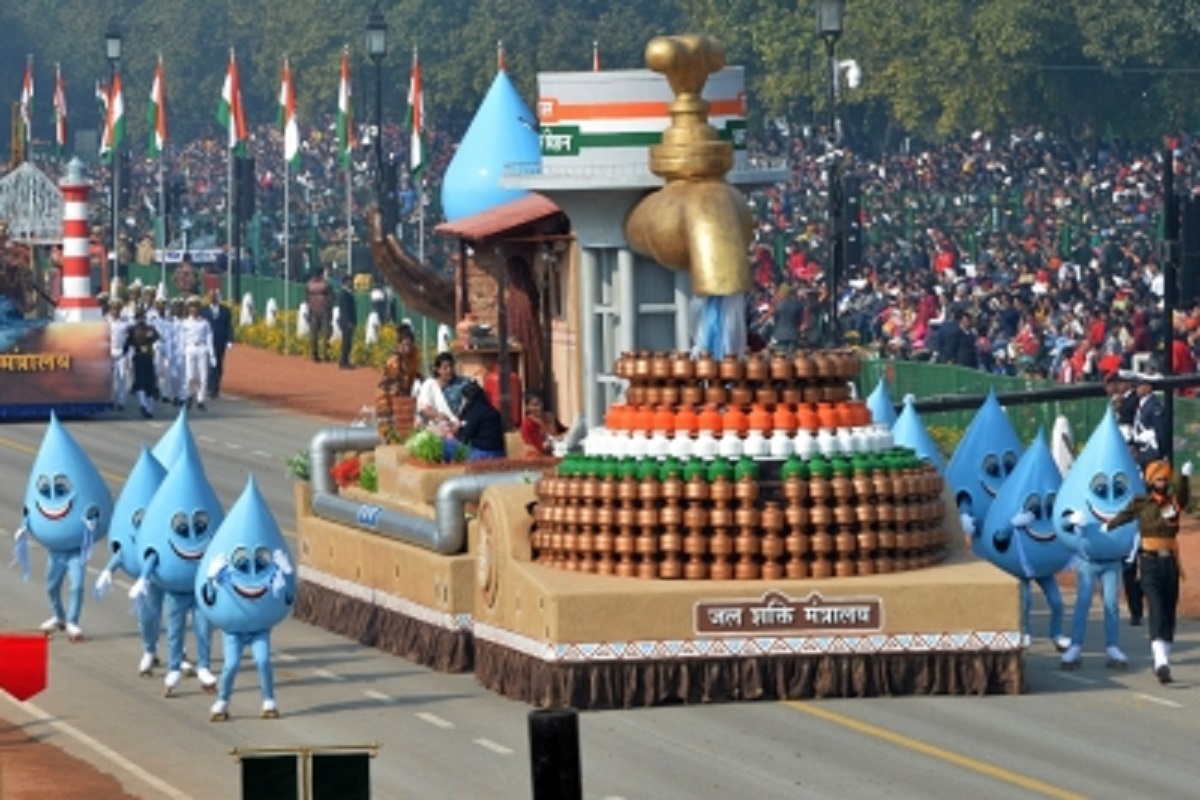A sky blue, smiling, huge drop of water stands resting one a flowing tap right in front, with a traditional Ladakhi mud house behind it. On the one hand are happy Ladakhi people and on the other, the support teams, some women are testing water sources, some men are putting in pipelines in place and yet some, checking connections.
For the Jal Shakti Ministry to showcase its flagship project running in Mission Mode – Jal Jeevan Mission (JJM), its tableau, ‘Jal Jeevan Mission: Changing Lives’ at the Republic Day parade this year could not have been a better opportunity. And the location chosen was Ladakh.
Advertisement
The harshest of terrain and sub-zero temperatures, sometimes even minus 20 at night. Not only are the water sources frozen, but even the supply lines are inoperative because of extreme winter as sometimes the pipes are frozen or burst regularly.
It is in such inclement weather conditions and more than 11,000 feet average altitude that the JJM has sought to bring about a change. The JJM, as it is popular, aims at providing functional tap water connection to every rural household across India.
Ladakh has the lowest population density in the country (2.8 person / sq km), villages are scattered, and rainfall is scarce. It remains cut off from the rest of the country for a few months in a year due to closure of passes during winters. This affects the supply of materials badly. Further, most of the water sources are in inaccessible areas, in many areas of Ladakh the water bodies freeze in winters, a lot of labour is required for construction and help of animals & helicopters is taken to lift and transport the material.
“Due to freezing temperatures, in place of regular GI pipe, HDPE pipes are used, and main supply lines are laid below frost line. Wherever pipes come above the frost line, these are encased in 4″ dm of glass wool, wood, aluminium jacketing for insulation. Solar power plays an integral part in the water supply chain and ensures continuous flow of water in the pipeline,” said an official.
There are technical challenges as well to draw water from frozen water sources.
In such areas where people were forced to dig ice and drink it after melting, now getting clean tap water in the comfort of their homes, schools and anganwadis. “Not only that, through sensor based IoT systems they know live data about quantity, quality and monitoring of the water supplied. Women in villages have been trained to test the quality of water using Field Test Kits (FTKs),” he added.
Ladakh was just a showcase. Across India, the JJM has trained more than 8.6 lakh women so far in ensuring clean tap water to homes with the help of FTKs. Water testing laboratories in the country are now open for the public to get their drinking water tested.
A digital board displaying live temperature and real time data about water supply, chlorination etc., and progress of the Mission is also presented.
Union Jal Shakti Minister Gajendra Singh Shekhawat said, “In a very short span of 29 months since its announcement in August 2019, Jal Jeevan Mission has provided tap water supply to more than 5.63 crore rural households, 8.4 lakh schools and 8.6 lakh anganwadi centres in India.a
At the time of announcement of the Mission, only 3.23 crore homes had tap water supply and today more than 8.87 crore homes have tap water connections.
Akin to Ladakh, the JJM Jal Jeevan Mission has been working in the most difficult terrain of the country to provide tap water to communities in high altitudes of Himachal Pradesh or Uttarakhand or in deserts of Rajasthan and Gujarat.











